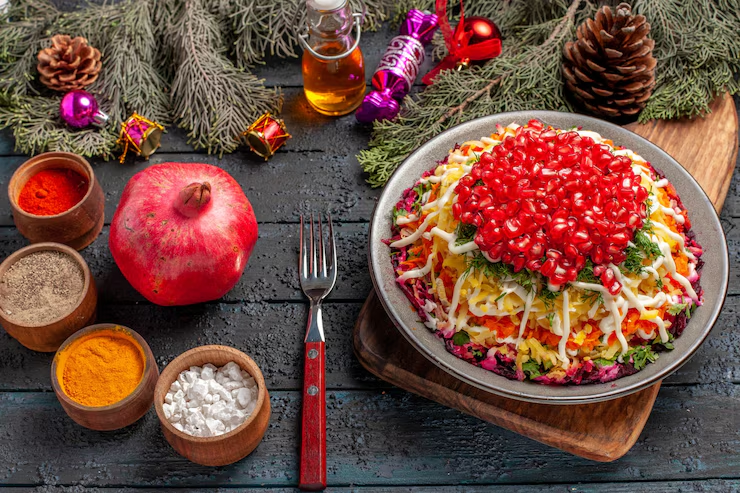In the vast and diverse world of Turkish cuisine, certain dishes hold a special place far beyond mere taste—they carry stories, traditions, and a connection to the land and its people. One such dish is çeciir, a beloved chickpea-based meal that has been enjoyed in Turkey for generations. This humble yet flavorful dish reflects the rich agricultural history of the region and showcases the ingenuity of Turkish home cooks who transform simple ingredients into comforting meals.
Though often overlooked outside of Turkey, çeciir is a testament to how food can embody culture and identity. Today, as global interest in wholesome and traditional foods grows, çeciir is making a quiet comeback not only in Turkish kitchens but also on the plates of international food lovers.
This article will take you on a journey through the origins of çeciir, its various forms, how it is traditionally prepared, and why it remains significant in Turkish society. We’ll also explore its health benefits and how modern twists keep it relevant in contemporary dining.
The Origins of Çeciir: A Historical Overview
To understand çeciir, we must first look at the humble chickpea, the star ingredient. Chickpeas have been cultivated in the Anatolian region for thousands of years, dating back to ancient times when agriculture began to flourish. This legume thrived in Turkey’s climate and soil, becoming a dietary cornerstone for many communities.
Çeciir likely emerged as a practical dish during times when meat was scarce or too expensive, offering a protein-rich alternative that could be stored and cooked easily. Over centuries, this chickpea-based dish became intertwined with rural life and local customs.
Its name, çeciir, is thought to be a regional variation or dialectal term linked to chickpeas and the cooking method used. While the exact origin of the word is debated, what remains clear is that çeciir embodies simplicity and nourishment—a theme common in many traditional Turkish meals.
What Is Çeciir? A Closer Look at the Dish
At its core, çeciir is a dish made primarily from cooked chickpeas, often combined with other ingredients such as onions, garlic, tomatoes, and spices. The preparation varies by region, but the essence is a wholesome, hearty dish that highlights the natural flavors of chickpeas.
Typically, dried chickpeas are soaked overnight and boiled until tender. The cooking liquid, often rich in flavor, is sometimes used as a broth base. In some recipes, the chickpeas are mashed or crushed to create a creamy texture, while in others, they remain whole for a more rustic feel.
Spices like cumin, paprika, and black pepper frequently appear, bringing warmth and depth. Olive oil or butter might be added to enrich the dish, and fresh herbs such as parsley or mint offer brightness. The balance of simple ingredients creates a satisfying meal that can be eaten alone or accompanied by bread or rice.
Regional Variations of Çeciir Across Turkey
Turkey’s diverse geography and cultural tapestry mean that dishes like çeciir take on unique forms depending on where you are. In the eastern provinces, for example, çeciir may be spicier and heartier, reflecting the local palate and harsher climates.
In coastal areas, additional fresh vegetables like tomatoes and peppers are often included, lending a lighter and more vibrant profile. Some families incorporate yogurt or tahini sauce as a topping, adding creaminess and tang.
There are also versions where chickpeas are cooked alongside bulgur or lentils, making the dish more filling and varied. In some parts, çeciir is served cold as a salad, mixed with fresh herbs, lemon juice, and olive oil.
These variations highlight the adaptability of çeciir and its role as a flexible dish suited to many tastes and occasions.
Traditional Preparation Methods
Making çeciir is a labor of love that often starts with soaking the chickpeas for several hours or overnight to soften them. This step not only reduces cooking time but also improves digestibility.
Once soaked, the chickpeas are boiled slowly until they reach a tender consistency. The cooking water is sometimes reserved as a flavorful base for soups or sauces. Onions and garlic are sautéed in olive oil or butter until golden and fragrant, creating a savory foundation.
Tomatoes, either fresh or as a paste, might be added next, simmering to blend with the chickpeas. Spices are introduced gradually, building complexity without overpowering the dish’s natural nuttiness.
For a smooth texture, some cooks mash the chickpeas slightly, while others prefer to keep them whole for texture contrast. Fresh herbs are sprinkled on top just before serving to enhance aroma and freshness.
Traditionally, çeciir is served hot, accompanied by crusty bread, allowing diners to scoop and savor every bite.
The Cultural Significance of Çeciir
More than just food, çeciir carries deep cultural meaning within Turkish society. It represents frugality, resourcefulness, and the ability to create something wholesome from simple ingredients—qualities celebrated in Turkish values.
Often prepared in family homes, especially during colder months, çeciir is a comfort food that brings people together around the table. It reflects a connection to the land, as chickpeas are a crop that farmers rely on annually.
In rural areas, çeciir is associated with hospitality and communal dining, served during gatherings and special occasions. It also symbolizes a continuity of tradition, passed down through generations as a culinary heirloom.
Nutritional Benefits of Çeciir
Chickpeas, the main ingredient in çeciir, are a nutritional powerhouse. They are rich in plant-based protein, making the dish an excellent source of energy for vegetarians and meat-eaters alike.
In addition to protein, chickpeas provide dietary fiber, which supports digestive health and helps regulate blood sugar levels. They also contain essential vitamins and minerals such as folate, iron, and magnesium.
Çeciir’s low glycemic index makes it a suitable dish for people managing diabetes or looking to maintain steady energy levels throughout the day. The inclusion of olive oil and fresh herbs further boosts the dish’s heart-healthy properties.
Overall, çeciir is a wholesome meal that combines taste with nutrition, proving that traditional dishes can be both delicious and good for you.
Modern Twists and Contemporary Uses
While rooted in tradition, çeciir is far from static. Modern chefs and home cooks are reimagining the dish with new ingredients and techniques to suit today’s palates and lifestyles.
Some innovative recipes incorporate roasted chickpeas for crunch, or add spices like smoked paprika and chili flakes for a bolder taste. Vegan versions have emerged, pairing çeciir with tahini sauces, fresh salads, and grains like quinoa.
In urban restaurants, çeciir is sometimes served as part of mezze platters or as a hearty side dish alongside grilled meats. It has also found a place in health-conscious menus thanks to its balanced nutrition and satisfying flavor.
This adaptability shows how traditional dishes like çeciir continue to evolve while honoring their origins.
How to Enjoy Çeciir: Serving Suggestions
Çeciir is versatile and can be enjoyed in many ways. Traditionally, it is eaten as a warm main dish with fresh bread to soak up the rich flavors.
For a lighter meal, serve it alongside a fresh salad of cucumbers, tomatoes, and herbs. Some like to add a dollop of yogurt or a drizzle of olive oil on top to enhance creaminess.
It also pairs well with grilled vegetables, rice pilaf, or bulgur wheat for a complete and balanced meal. In some homes, çeciir is served with pickled vegetables to provide a tangy contrast.
Whether as a simple lunch or part of a larger feast, çeciir’s comforting texture and flavor make it a crowd-pleaser.
Conclusion
Çecii’r stands as a shining example of Turkey’s rich culinary heritage, demonstrating how humble ingredients like chickpeas can be transformed into a dish full of flavor, history, and culture. Its adaptability, nutrition, and comforting qualities have helped it endure through centuries and across regions.
Today, as more people seek out authentic and wholesome foods, çecii’r offers a delicious bridge between tradition and modern dining. Whether you’re discovering it for the first time or revisiting a family favorite, this chickpea dish invites you to taste the heart of Turkey’s food culture.
FAQs About Çeciir
What is çeciir made of?
Çeciir is primarily made from cooked chickpeas, combined with ingredients like onions, garlic, tomatoes, and spices.
Is çeciir a traditional Turkish dish?
Yes, çeciir has been part of Turkish cuisine for generations, especially in rural and home-cooked settings.
Can çeciir be made vegan?
Absolutely, çeciir is naturally plant-based, and can easily be made vegan by using olive oil instead of butter.
Is çeciir healthy?
Yes, it’s rich in protein, fiber, and essential nutrients, making it a nutritious and balanced meal.
How is çeciir typically served?
It is often served warm with bread, and sometimes accompanied by yogurt, salads, or pickled vegetables.
Are there regional differences in making çeciir?
Yes, different parts of Turkey have their own variations in spices, cooking methods, and additional ingredients.






